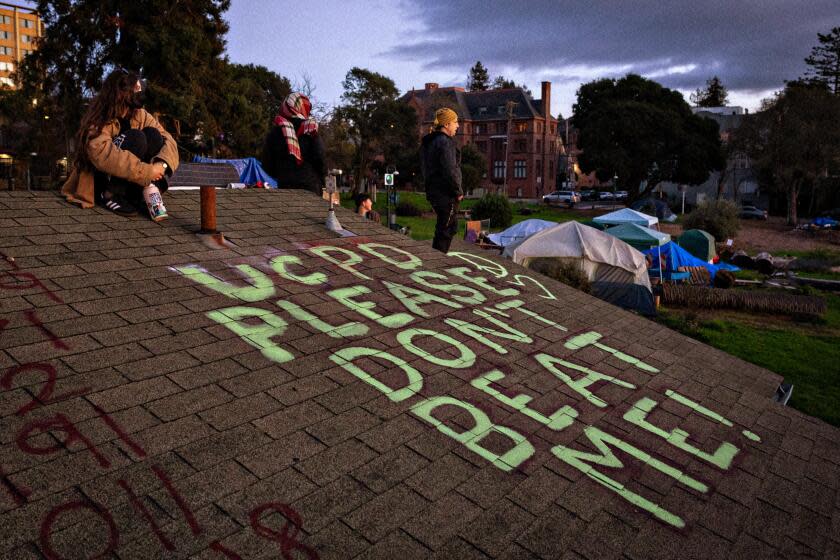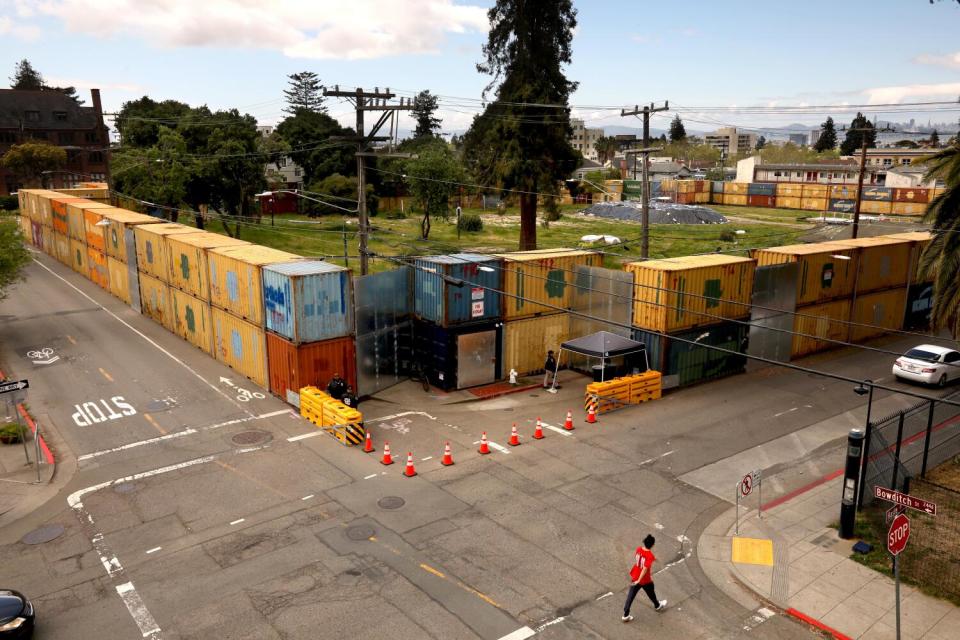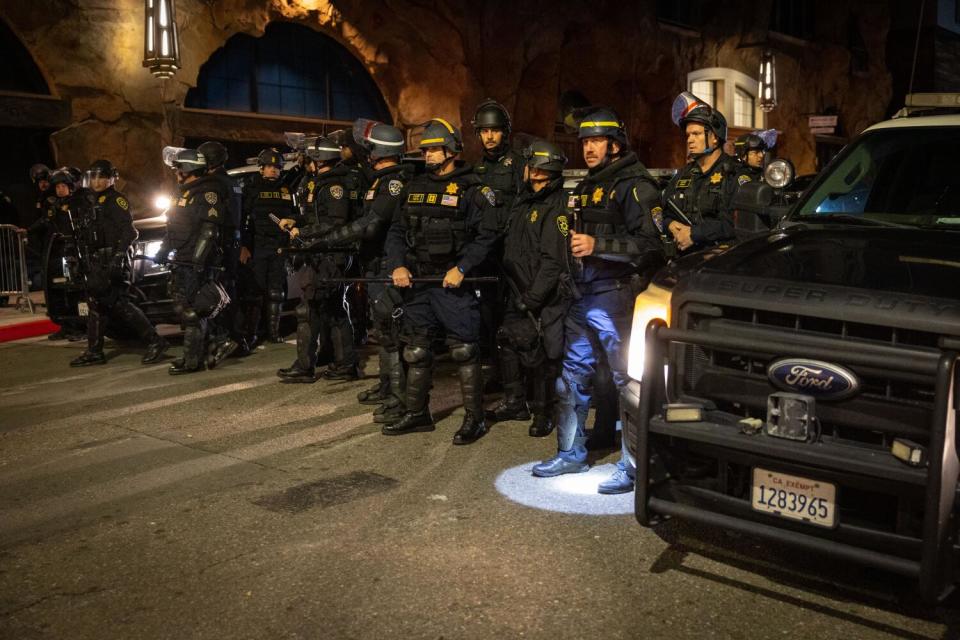State Supreme Court gives UC Berkeley go-ahead to develop People's Park, capping decades-long battle

The California Supreme Court on Thursday ruled that UC Berkeley can proceed with its controversial plan to build high-rise student housing on the site of storied People’s Park just south of the college campus.
In a unanimous opinion authored by Chief Justice Patricia Guerrero, the court overturned an appellate court ruling and dismissed a lawsuit filed by opponents of the development, writing: "In short, as all parties have effectively acknowledged, this lawsuit poses no obstacle to the development of the People's Park housing project."
"We are pleased and relieved that the Supreme Court’s decision enables the campus to resume construction at People’s Park," UC Berkeley officials said in a prepared statement. "The housing components of the project are desperately needed by our students and unhoused people, and the entire community will benefit from the fact that more than 60% of the 2.8-acre site will be revitalized as open park space."
The statement said details on the construction timeline would be released in the weeks ahead.
A small group of park supporters — who had set up a morning vigil outside the blockaded green space to await the decision — reacted with dismay as one member read the decision from her phone.

“It’s not looking good for the home team, y'all,” the activist said as she scanned the decision. “Everyone take a deep breath.”
"Boo," the group shouted as key points were read out. "Shame!"
The ruling marks what may — finally — be a decisive final chapter in a land-use saga that began when activists seized the parcel in a moment of 1960s protest and built a park with their own hands, hauling in sod and planting flowers. That launched a 55-year experiment in utopian ideals — and the harsh realities that sometimes trail after them.
The park just off Telegraph Avenue was born in 1969, after free speech radicals seized the property from the University of California, setting off weeks of tense confrontations between activists and law enforcement. The idea was that it would be a space of refuge, the embodiment of freedom and creativity, just blocks from the hustle and bustle of undergraduate housing, restaurants, bars and bookstores that form the heart of Berkeley’s southside.
“It was a place where people who were countercultural or creative or unusual could manifest and exist in community,” Andrea Pritchett, a Berkeley resident who sits on the People’s Park Council advocacy group, said in an interview earlier this year. “The point was that if you wanted to organize a group, you sit under the shade of the trees and organize.”
“A place where all good things could thrive,” added Steve Wasserman, the publisher of Heyday Books, who helped cultivate the park as a teenager and decades later published a history on the 50th anniversary of the event.
For many it was a Berkeley institution, where generations of students and community members had picnics, smoked dope, organized to end apartheid and police brutality and communed naked with the moon, among other activities.
But in recent years, it also became a refuge for homeless people and a magnet for drugs, rats and crime. University officials said parents complained that the unkempt and sometimes dangerous space has been allowed to exist just a block away from a Haste Street dorm complex.
And outside the park's green borders, the housing crisis in Berkeley became ever more extreme. With rents around town spiraling upward and students desperate to find affordable units, the university faced tremendous pressure to build new housing. Campus officials said last year that Berkeley was able to house only 23% of its students, the lowest share among the UC system’s 10 campuses. The scarcity of campus housing has forced many students to cram into shared spaces, commute long distances or live out of their cars.
And in a town long known for its progressive politics — and once decidedly anti-development — many leaders came to favor housing construction.
"I am pleased at the common sense decision of the state Supreme Court to allow construction of much-needed student housing, supportive housing, and open space at People’s Park," Berkeley Mayor Jesse Arreguín said in response to the ruling. "This decision is a win-win that will benefit our community and the next generation of students."
University officials, meanwhile, never let go of their designs on what was, after all, university-owned land.
Read more: UC Berkeley makes dead-of-night push to wall off storied People's Park
Every time they tried to develop it, however, they were met with furious resistance.
In the 1990s, the university constructed volleyball courts, prompting a machete-wielding activist to break into the campus home of then-Chancellor Chang-Lin Tien. The intruder was shot and killed by police. A note in her bag read: “We are willing to die for this piece of land. Are you?”
In 2017, Carol Christ became chancellor and promised to double the number of student housing beds within a decade. She made it clear that she thought the park — long a controversial “third rail” that campus leaders avoided — was a good location for a new dormitory.
A plan was developed to create a towering dormitory complex with space for 1,100 students and a separate building with permanent supportive housing for 125 homeless people. About 60% of the property would remain green space, with commemorative exhibits about the park’s history.
Opponents — a very-Berkeley coalition of park idealists and NIMBYs opposed to growth — fought the development, claiming the university did not do enough to study alternative sites. They filed a lawsuit, claiming the university’s Environmental Impact Report on the project was inadequate.
In 2023, a state appellate court sided with university opponents, ruling that the California Environmental Quality Act required developers to analyze and mitigate a project’s potential “social noise’’ — in this case the noise generated by students who may drink, yell and hold loud “unruly parties.”

The ruling marked the first time a court held that the behavior of a particular group of people whom a housing development might bring into a neighborhood must be assessed, according to UC attorneys.
The university appealed the legal ruling to the state Supreme Court and also turned to the Legislature. Lawmakers passed a law, signed by Gov. Gavin Newsom in September, designed to make it easier for universities to build housing and overcome lawsuits from residents who raise noise concerns.
That law would become a key factor in the high court's deliberations.
"We conclude that, based on the new law, none of Good Neighbor’s claims has merit and we accordingly reverse the Court of Appeal’s judgment," the opinion read. "We hold that the new law applies to both the People’s Park housing project and the development plan, and the EIR is not inadequate for having failed to study the potential noisiness of future students at UC Berkeley in connection with this project."
Even as the court deliberated, UC Berkeley unspooled yet one more effort to take back control of People's Park.
In the predawn hours of Jan. 4, with many students away on winter break, a massive contingent of law enforcement officers converged on the park, for an hours-long operation, clearing out activists and encampments. Work crews followed them in, razing trees and greenery and walling off the space by double-stacking heavy metal cargo containers around the entire park perimeter.
That imposing perimeter — with some shipping containers now covered with colorful graffiti — remained in place all spring, as many student activists channeled their energies into a pro-Palestinian encampment on the steps of Sproul Plaza.
As word of the People's Park decision spread Thursday, the group keeping vigil outside the park grew, with some sporting kaffiyeh scarves.
Enrique Marisol, 23, a recent UC Berkeley graduate, said the coalition remains resolved in its fight to preserve People’s Park for the community.
“People are going to protest. There’s no way people are just gonna watch construction equipment go through these gates and not do something about it,” Marisol said. “There’s no solid plan, but I’m certain there will be people in the streets.”
This story originally appeared in Los Angeles Times.


